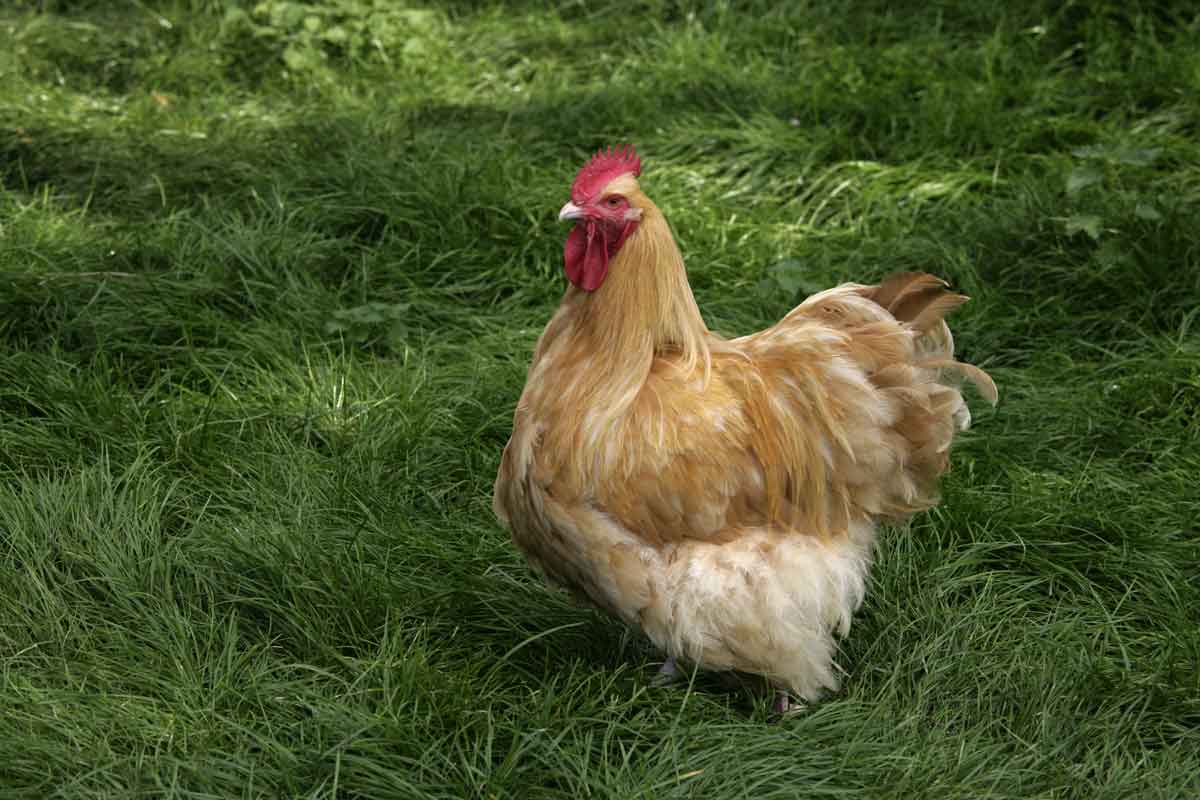There are a lot of aspects that go in check when a backyard breeder thinks of a chicken. Buff Orpington is among the popular options that many farmers recommend.
But have you ever asked yourself “is the Buff Orpington chicken the best breed for you?”
In this article, you’ll find the ultimate answer to this question!
The Origin of the Buff Orpington Chicken
In the late 1800s, the outbreak of hen fever started to subside in Great Britain. As a result, the interest in breeding chickens started peaking throughout this period.
The First man to breed the Buff Orpington was William Cook, a coachman from a town in the county of Kent, England called “Orpington”. In 1866, he crossed multiple species to produce the hybrid chicken. In that process, he used Plymouth Rocks, Minorcas, and German Langshans.
His main purpose was to breed a black chicken to hide the effects of dirt and air pollution that was widespread at that time due to factories.
The new breed was a huge success and the public received it nicely. After that, he introduced multiple colors of the chicken, including buff, white, and blue. However, the Buff color remained the most popular color of that breed until this day.
Following its success in Great Britain, Cook started selling his chickens abroad. His biggest markets included South Africa, Europe, and the United States. Once again, the breed was a huge success due to its versatility and great features
Their Size and Physical Features
Now that you know about their history and where they come from, let’s have a brief overview of how they look in terms of size, color, stance, and others.
The first thing you need to know is that Buff Orpington has a lot of variations. They have a lot of different varieties with various physical features throughout the world.
For example, the Germans developed the Bantam variety, which keeps the same features but a bit smaller in size.
As for the colors, the American Poultry Association stated that the color standards for the Orpington should be within 4 colors. These ones are buff, black, white, blue. Apart from the buff color, the other ones are extremely rare and difficult to find
The Buff Orpington should be heavy with a broad body and a relatively low stance. Also, it should have fluffy and smooth feathers with a short and curvy back.
Buff Orpingtons have pinkish-white beaks. Also, their feet and shanks should have a white color with a pinkish tinge. Their eyes, comb, wattles, earlobes are all red in color. Buff Orpingtons have five peaks on their comb.
Buff Orpingtons are large chickens. The mature male weighs about 9 to 10 pounds where the female range between 7 to 8 pounds. The Bantam variety is much smaller at 3 to 3.5 pounds.
Their Temperament and Tolerance
One of the best things about these birds is their temperament. They’re extremely gentle and non-aggressive compared to other big birds. This makes them great for a family-owned flock, as they interact well with people and children.
They respond to attention but they’re passive towards aggressive chicken breeds. That’s why you should put them in a mixed flock that has aggressive breeds. For example, Welsummers and Rhode Islands.
They’re also relatively quiet, so they won’t make a huge amount of noise like silkies and other loud breeds. This makes them good for cities and suburban neighborhoods.
They tolerate the confinement well and have no problem in being transported. Unlike many species, the Buff Orpington rooster is remarkably gentle too. Hens make great mothers and care for their chicks, which is great for breeders.
Moreover, they can also handle the cold very well. However, they don’t take hot weather lightly, they need shade and plenty of space in summer.
What Are They Used For?
As you already know, the Buff Orpington are dual-purpose chickens. This means that you can utilize them for their meat and eggs.
However, they’re most commonly used for show and display. In fact, a lot of breeders selectively breed them according to appearance over productivity.
In general, their friendly nature with children and humans makes them great pets. That’s why you can find them as outdoor pets in many households, schools, and others.
How Often Do They Lay Eggs?
The Buff Orpingtons have a huge tendency towards brooding. This means that they’re more likely to sit on their eggs and wait for them to hatch.
Since they have red ear lobes and dark feathers, their eggs are large and brown in color. They average Buff Orpington has a wide range of egg-laying depending on many factors. They can lay anywhere from 180 to 240 eggs per year.
In other words, they aren’t egg-laying machines. However, they’re considered good layers nonetheless. To put things in perspective, you can expect up to 280 to 300 eggs per year from a Rhode Island Hen.
Usually, the Buff Orpington hen productivity decline after about 22 to 24 months. At that point, they’re better on your table than in your coop.
Is it Easy to Raise a Buff Orpington Chicken?
A friendly chicken is always easy to raise, and a Buff Orpington isn’t an exception. You already know that they handle confinement and are relatively calm and quiet.
You only need to keep them a bit active, as they have a tendency towards laziness and staying motionless for a long time.
Also, their beauty comes at a price. They have thick plumage that protects them from the cold. Yet, you need to check them for lice and mites regularly, as they can easily creep into their feathers. But don’t worry, poultry dust is enough to keep those pests away.

Wrap Up
So, is the Buff Orpington chicken the best breed for you?
The answer to this question depends mainly on your purpose of having the chicken. The Buff Orpington is an amazing looking breed that’s also dual-purpose. They’re suitable for you if you’re living in a suburban area and want a good breed that won’t be a burden to raise.
They’re also a heritage breed. In fact, up until 2016, they were listed as endangered according to the American Breed Livestock Conservancy.
Thanks to backyard breeders, their numbers started to grow again. This means that you’ll be sharing in keeping these amazing birds among us!

